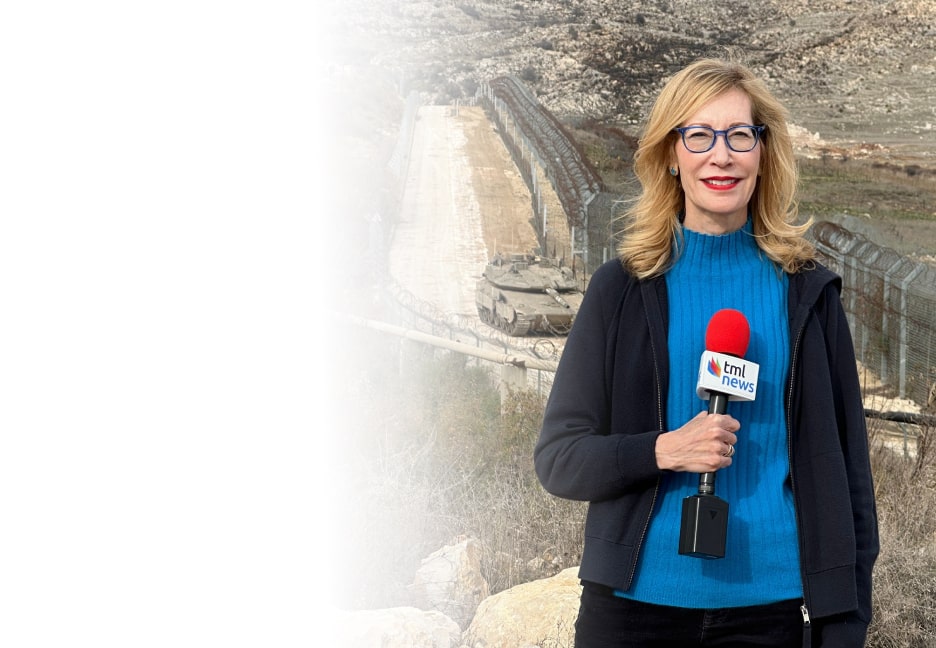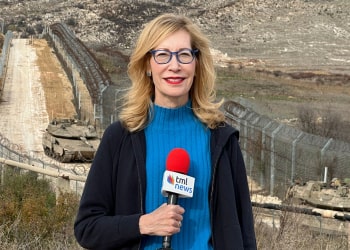Nineteen months after Hamas launched its deadly assault on Israel, sparking a war on multiple fronts, the vast majority of Jews in the Diaspora remain closely engaged with the conflict.
A new survey by the Jewish Federations of North America, released last month, found that 91% of American Jews are following the war either “very closely” or “somewhat closely.” That figure is only 6 percentage points lower than in October 2023, in the immediate aftermath of the attack, and five points lower than last year.
Federation officials noted in a recent background call with journalists that while attention has declined slightly, as expected over time, interest remains remarkably high, with most of the Jewish community still following developments in Israel closely.
The emotional toll also remains significant.
According to the same survey, 84% of respondents said they feel either “greatly” or “somewhat” emotionally impacted by the ongoing war. That’s only a modest drop from 87% in October 2023 and 92% in March 2024.
People are still very emotionally impacted
“People are still very emotionally impacted,” said JFNA’s Chief Impact and Growth Officer Mimi Kravetz.
She told The Media Line that the slight decline in emotional impact between March 2024 and 2025 likely reflects people “normalizing the experience—they are not as shocked as they were a year ago.”
Still, Kravetz emphasized that the Jewish Diaspora in the United States is “absolutely experiencing collective trauma.”
She also pointed to a significant gap in support for Israel over Hamas among young American Jews compared to their peers. Although the new survey did not specifically measure emotional connection to Israel, Kravetz referenced a 2020 Pew Research Center study showing a sharp decline in connection among younger Jews. However, she noted, “there seems to be a spike in connection since October 7, 2023.”
This widening gap, she explained, helps clarify why young Jewish adults may be experiencing deeper emotional distress. Many are seeking out people and spaces that better understand what they are going through.
“One thing we see in the data collected is that over time, actually being part of the Jewish community and having people to show up with—people engaging with community and particularly religious or faith communities—can be a tool that helps people with emotional stress, emotional impact, and their well-being.”
As a result, Kravetz said the most important thing the Jewish community can do for those impacted by the war is to create welcoming environments and foster a strong sense of belonging.
This holiday season, give to:
Truth and understanding
The Media Line's intrepid correspondents are in Israel, Gaza, Lebanon, Syria and Pakistan providing first-person reporting.
They all said they cover it.
We see it.
We report with just one agenda: the truth.


‘The Surge’
Since October 7, the Jewish Federations of North America have been tracking what they call “the Surge”—a rise in American Jews seeking deeper involvement in Jewish life. The latest survey, released this month, aimed to determine whether that heightened engagement is still ongoing. According to the federation, the answer is yes: 31% of American Jews report that they continue to engage with Jewish life at higher levels than before the war.
The Surge has shown staying power
“A year and a half after the Hamas attacks on Israel upended Jewish life, we would have expected to see a significant return toward the status quo, but the Surge has shown staying power,” said Kravetz. “People continue to feel the pain of this moment and, relatedly, continue to seek connection.”
In 2023, the federation conducted a nationally representative study to measure engagement in the months following the October 7 attacks. The results were unprecedented: 43% of Jews across all levels of prior involvement reported increased participation, ranging from those who had never been engaged to those already deeply connected who became even more active.
This year’s survey was conducted from March 5 to March 25, 2025. The goal was to offer federations and partner organizations a clearer picture of the evolving needs of the Jewish community, using data to guide programming and outreach. The 2025 data is being compared directly to results from last year.
The survey was administered via text message, reaching 5,798 respondents, including nearly 2,000 who identified as Jewish. The results were weighted to reflect both the broader US population and the Jewish community more specifically.
Among those who were not highly engaged before October 7, 28% now say they feel part of a Jewish community, and another 16% say they are on the path to becoming part of one.
The demographic breakdown of the Surge has remained relatively consistent year over year. Midlife adults (ages 55–74 without children at home) now represent 29% of the Surge, up from 25% in 2024. Young adults (ages 18–34 without children) remain steady at 21%. Parents with children at home saw a decline, making up 19% of the Surge this year, down from 24% last year.
People engaging more deeply in Jewish life are doing so in various ways. Many are reconnecting through informal means like spending more time with Jewish friends, attending events at local synagogues, or joining social media and WhatsApp groups. Others are participating through institutions such as Hillel, Chabad, Jewish Community Centers, and smaller local organizations offering new avenues for connection.
Moreover, 73% of respondents said they were actively seeking to learn more about both Israel and broader Jewish topics as part of their increased engagement.
So, how have those experiences been?
The survey results were overwhelmingly positive. Most people who chose to show up said they felt included, inspired, comfortable, and even “at home.” Only a small percentage used negative terms like “alienated,” “turned off,” or “excluded.”
The data shows that when people show up, the experiences they’re having are overwhelmingly positive
“The data shows that when people show up, the experiences they’re having are overwhelmingly positive,” said Elan Kramer, senior director and acting head of Community and Jewish Life for JFNA. “But showing up is just the beginning. It’s on us to nurture friendships, create spaces that foster a sense of belonging, and offer meaningful Jewish experiences that turn moments of engagement into lasting community. By meeting people where they are, inviting them into vibrant, welcoming communities, and creating meaningful points of connection, we can strengthen Jewish life in ways that will endure far beyond this moment.”
Another key finding from the survey was the high level of concern about antisemitism in the United States. Some 79% of respondents expressed fear or worry about rising antisemitism. While that figure is 11 percentage points lower than in the federation’s March 2024 survey, Kravetz said the drop may reflect a normalization of this experience, not a lessening of the threat. “Seventy-nine percent is still really high,” she emphasized.
“The federation is engaging new strategies to raise awareness about what is going on, and we know we need to do more about it,” Kravetz said. “It is under-resourced versus the magnitude of the challenges and needs.”
She told The Media Line that a key part of the federation’s response includes building personal relationships with decision-makers—elected officials, school boards, teachers’ unions, and leaders of other faiths—to strengthen partnerships and understanding. At the same time, a strong advocacy team is working to influence both national and local legislation related to combating antisemitism and hate.
“People from across the country are coming in each week—or at least twice a month—to Washington, DC,” Kravetz said. “They’re going to the Hill and meeting with members of Congress, staffers, and the administration because it is so important that money comes through for these situations.”
In addition, many federations are running educational missions to Israel for civic and interfaith leaders, helping them understand the country beyond what they see in headlines. Federations are also training a new generation of grassroots lay leaders who can speak about Israel and Jewish identity in their workplaces and communities.
“People don’t know the level of work that is happening, and we need to be clearer about it,” Kravetz added. “How people feel is related to what they are aware of and feel the community is doing to stand up for them.”
Despite the high numbers of people feeling the emotional impact of the war and choosing to reengage, Kravetz noted that this moment of heightened connection may not last forever.
“If we are going to meet people’s needs, our community cannot wait—we must step up and respond now,” she said.